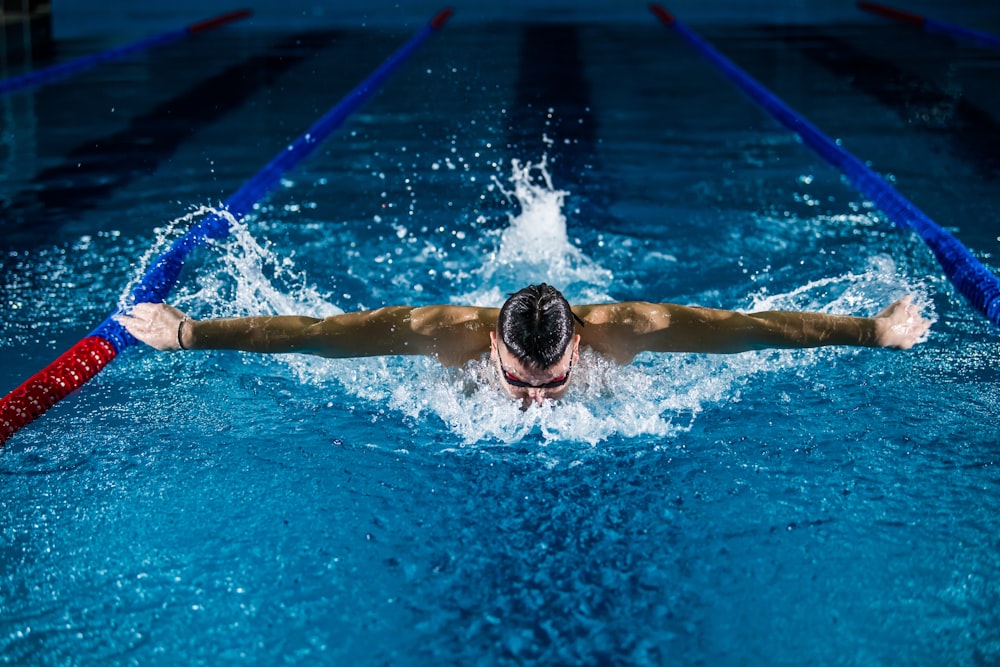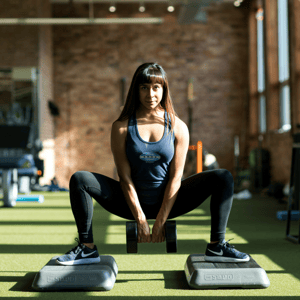MAKE A SPLASH
THIS SUMMER

Join Now For $0 Enrollment!
Learn MorePosted By: Ryan McNeal /
For athletes, their job is being in shape and working out. Performing well at whatever that particular job may be inevitably requires hours of physical training, along with a team of specialists surrounding them to help guide them towards success. Needless to say, this is not the reality for most people, but there are some simple principles these athletes follow that the rest of us can apply to our own workouts and improve our own experience. Try integrating these 3 key things that athletes do everyday into your routine, and see how it makes a difference.
 1. Move daily
1. Move daily
Every day does not have to be the hardest fitness day of your life - but get up and be active. Minimal amounts of activity, even 5 minutes of flow stretching or a walk will do wonders for your mind and body. We have a permanent responsibility in keeping our minds sharp, our limbs and core strong, while keeping our joints mobile. For athletes, this is a priority.
Physical activity compounds, which means small and frequent bouts of activity are ok. Quick workouts do wonders, but it is important to keep our intensity focused - this means, for example, "My heart rate is above 150 beats per minute" or "I am sweating and my breaths are labored" or "I safely lifted a substantial weight." Again, every activity does not have to be the most challenging workout you have ever attempted, but aim to get your heart rate elevated and keep your mind engaged.
Perhaps most importantly, while we all want to focus on reducing body fat or getting stronger, do not neglect moving well and under control, especially as we become older adults. Safety comes first, because injury takes you out of the game and sets you back.
 2. Train based on movements - not just muscles
2. Train based on movements - not just muscles
Sure, athletes what to look good too, but they get their work done first. Be functional - try to limit isolation training and train your body for the demands of everyday life. Earn the strength to complete daily tasks without nagging pain. Not only is this a comprehensive approach to training, it's also practical for both athletes and everyday people.
So what does that mean? Focus on squatting, hinging (folding over at the waist), pushing, pulling, and rotation maneuvers for a total body approach. If you are not used to this type of training, you may find that for some of these new movements a lighter weight is required. That's ok, start with what feels safe, and increase from there. You will find yourself building strength more steadily all over than if you are repeating the same 4 workouts every week.
With functional training, you will improve neuromuscular coordination, improve hormone production and uptake, strengthen bones and muscles, and improve mobility. A great resource on this topic is “Move well and move often” by Grey Cook, Author, Physical Therapist – Founder of Functional Movement Screen.
 3. Eliminate nutritional deficiencies
3. Eliminate nutritional deficiencies
While this is something athletes focus on off the field, it is nevertheless a key component to their success and performance, and even for me was a game-changer when I first incorporated it into my life. Eliminating nutritional deficiencies means essentially making sure you are giving your body everything that it needs to operate at its best, no matter what your diet. As John Berardi of Precision Nutrition points out, the four key areas in which most people are deficient are: hydration, vitamin and mineral intake, protein intake, and healthy fat consumption - it ignites your engine. He has a great article that outlines his research, and most importantly its not about a set of rules to follow, rather a framework for evaluation to determine where you are deficient. It's up to you to do your own research on what vitamins may be best for you, etc., but it's important to know where to start.
With diet and nutrition, as well as with working out, a great analogy is to think about a volume knob as opposed to a light switch. It's not possible to just flip a switch and turn it on, rather changes and improvement compound and happen over time. It can be easy to get distracted or discouraged without the instant gratification we are used to these days, but patience and perseverance is key to success, both for athletes and for regular people.
Regarding all three strategies for “every day athletes”, this quote comes to mind: "If it works for the 1% (elite athletes)- it will work for you." - Dan John, author and Strength & Conditioning Coach. A really important thing to remember is that professional athletes have a team of coaches and trainers surrounding them at all times to help maximize their success, and they still struggle with this 100% of the time - so of course we do too. This is hard stuff, but that doesn't mean we should give it our all.
 Ryan McNeal is a graduate of the University of Wisconsin-Milwaukee where he studied Human Movement Sciences. He is a certified NSCA-personal trainer and NSCA-Strength and Conditioning Coach. He has worked with the Seattle Mariners Baseball Organization in player development, the Texas Rangers Baseball Organization, and in 2011 earned the Registered Strength and Conditioning distinction from the NSCA. After stepping away from professional baseball strength coaching, he earned a Masters of Arts in Adult Education from the University of Phoenix. He has been a personal trainer with CAC since December of 2012, guiding clients toward healthier versions of themselves.
Ryan McNeal is a graduate of the University of Wisconsin-Milwaukee where he studied Human Movement Sciences. He is a certified NSCA-personal trainer and NSCA-Strength and Conditioning Coach. He has worked with the Seattle Mariners Baseball Organization in player development, the Texas Rangers Baseball Organization, and in 2011 earned the Registered Strength and Conditioning distinction from the NSCA. After stepping away from professional baseball strength coaching, he earned a Masters of Arts in Adult Education from the University of Phoenix. He has been a personal trainer with CAC since December of 2012, guiding clients toward healthier versions of themselves.
| Alex Card
| Chicago Athletic Clubs
| Chicago Athletic Clubs
| Chicago Athletic Clubs
| Chicago Athletic Clubs
© 2026 Chicago Athletic Clubs. All Rights Reserved. Privacy PolicyEmployee Login
https://www.chicagoathleticclubs.com/
https://www.chicagoathleticclubs.com/services/personal-training/
0
5000
true